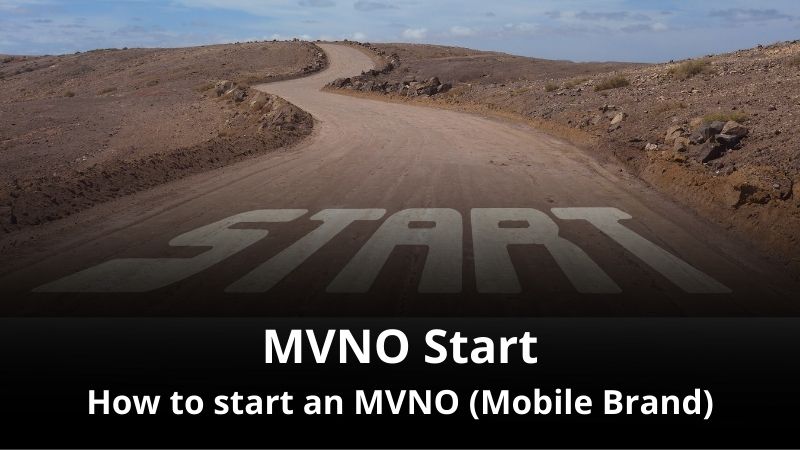How to create a Financial Plan for your Mobile Brand (MVNO)
It is important to create a Financial Plan for your Mobile Brand (MVNO). A good Financial Plan for your Mobile Brand (MVNO) showing the financial health is paramount to its long-term success and ability to compete in the dynamic telecommunications industry. A robust financial plan serves as a roadmap for managing revenue, expenses, and investments, enabling MVNOs to make informed decisions that align with their strategic goals.
The MVNO Financial Plan should provide a detailed analysis of the MVNO’s financial position, including revenue projections, cost estimates, capital requirements, and profitability forecasts. It delves into the intricacies of financial modeling, budgeting, and cash flow management, empowering MVNOs to make sound financial decisions.
Obviously you should be carefully managing your finances, your MVNOs can attract investors, secure financing, and ensure sustainable growth. The MVNO Financial Plan serves also as a valuable tool for guiding the MVNO’s financial decisions, ensuring that financial resources are allocated effectively to support the achievement of its strategic objectives.
As has been noted in “How to start an MVNO” there are at least 3 plans which are important to create, these are:
Here we give some guidance about what might be useful to put in your Financial Plan.
Once you have put together your business and marketing plan, you’ll need to get your finances in order. Here are the relevant questions you should answer:
- How much will it cost to launch your MVNO?
- What are your MVNO workforce requirements?
- How much will you outsource and what will the associated costs be?
- How much money can you invest and how much will you need from external investors?
- What is your expected ARPU and margin per subscriber?
- When do you expect your Mobile Brand (MVNO) to be profitable?
- How much will your MVNO license cost?
- How do I finance my Mobile Brand (MVNO)?
- 100 Points you might want to think about
How much will it cost to launch your MVNO?
Obviously this is depending many things such as: What are your upfront costs? What is your overhead? How much will your service agreement(s) cost? What tools and systems will you need, this also in relation to the flexibility you need as described in the business plan? How much will it cost to purchase and ship SIM cards (in case you use physical SIM cards)? How much does your marketing plan (Go To Market cost)? Will you need an office building or any other physical location? Etc.

What are your MVNO workforce requirements?

Next point is how many employees will you need, what will they be doing, and how much will they cost? Does it make sense to use foreign employees? What expertise and skills do the employees need to have (like language(s), commercial, technical, etc.)
Subsequently if your MVNO is part of a larger business, such as a retail brand, how many of your existing employees can be used/converted to MVNO employees?
In addition if you rely on resellers or agents, how much margin will you give them?
How much will you outsource and what will the associated costs be?
Equally important and depending on your MVNO configuration, you might rely on third parties to manage things like marketing, customer support, billing, collections, etc. But also, things like hosting/Cloud costs, storage, shipping.
How much money can you invest and how much will you need from external investors?
MVNOs can be quite affordable to launch, especially if you go with the Branded Reseller (Skinny MVNO) route.
However, if you want more control over your services and to approach a broader target audience, the numbers will add up quickly. It is critical to figure out just how much you’ll need.

What is your expected ARPU and margin per subscriber?
This is an important benchmark that will help you gauge your success as you build your mobile brand. In brief the ARPU in combination with the Margin can be calculated in various ways.
For instance, a very simplified way to do a quick calculation is like this, you sell a bundle for $50 and your purchase the same bundle from your provider (MNO/MVNE/MVNA) for $40, then the margin would be $10.
Of course in the simplified and quick calculation other costs such as shipment, marketing, employment, etc. etc. are not included. Obviously it is important that you do not forget these costs and incorporate them into your financial planning.
When do you expect your Mobile Brand (MVNO) to be profitable?
Your break-even point is another important benchmark. In the business plan you should have determined how many potential subscribers there are for your Mobile Brand. You can use this information in the financial plan. It will help you monitor the success of your launch.
For example, let’s say the potential number of subscribers is 5.000 and need to have 10.000 subscribers to become breakeven, this means you Mobile Brand will never become successful and you need to adjust your plans. The higher the number of potential subscribers the easier and faster your break-even point might be reached.
Never overestimate your potential number of subscribers, it is always better to stay on the cautious side. It can be that your break-even point needs to be in 3 months or 1 year or something else, this depends on your goals but also on your financials. Hence you might also need to decrease/increase the number of employees, marketing, etc.

How much will your MVNO license cost?

In some countries the costs for an MVNO / MVNE license are very high, for example in Nigeria. It would be wise to check how much the costs are in the country where you want to launch and if this is a one-time fee or a yearly fee.
In any case you also need to check if there are any additional costs related for your Mobile Brand (next to the license costs). To illustrate in the USA you need to pay additional TAX when you want to offer Mobile services in rural areas.
How do I finance my Mobile Brand (MVNO)?
The most important point is financing. Nothing will be free and everything costs money, like setting up a Mobile Brand, maintaining it, doing Marketing, etc. This means you need sufficient money to start up and to keep in operation until you reach your breakeven point.
Keep in mind that not everything will be going as you want or expect and that you need to have a buffer to take this into account.
There are several ways to get financing, like a personal/company loan, using profit from your existing business, investors, partnerships, crowdfunding, charity, family & friends, etc.













Important
Because of the outcome of the financial plan, you might need to adjust your business plan and marketing plan. It is important to keep all plans aligned.
100 Points you might want to think about for your Financial Plan
Developing a thorough financial plan is essential for the success and sustainability of your Mobile Virtual Network Operator (MVNO) or mobile brand. This comprehensive checklist covers various aspects crucial for developing a robust financial plan for your MVNO or mobile brand. Adapt and customize these points to suit the specific goals, context, and market dynamics of your venture.
Here are 100 points to consider for your Financial Plan for your Mobile Brand (MVNO).
Budget Allocation
- Allocation of budget across different departments.
- Marketing budget for customer acquisition.
- Research and development budget.
- Distribution and logistics budget.
- Contingency budget for unforeseen circumstances.
Cost of Customer Acquisition (CAC)
- Calculation of CAC for different marketing channels.
- Strategies to optimize and reduce CAC.
- Monitoring and adjustment of CAC over time.
- Evaluation of the lifetime value (LTV) of customers.
Pricing Strategy
- Competitive pricing analysis.
- Determination of optimal pricing models.
- Consideration of bundling and discount strategies.
- Evaluation of pricing impact on customer acquisition.
- Evaluation of pricing impact on customer retention
- Analysis of price elasticity.
Cost Structure
- Identification of fixed costs.
- Categorization of fixed costs.
- Variable costs associated with service provision.
- Consideration of one-time startup costs.
- Distribution expenses.
- Marketing expenses.
- Research and development costs.
Financial Controls
- Implementation of financial controls and monitoring systems.
- Regular financial reviews and audits.
- Risk management strategies for financial risks.
- Fraud prevention and detection measures.
- Financial reporting mechanisms.
Break-Even Analysis
- Identification of the break-even point.
- Timeframe for achieving break-even.
- Sensitivity analysis for break-even scenarios.
- Strategies for accelerating break-even.
Capital Expenditure (CapEx)
- Identification of capital expenditure requirements.
- Allocation of funds for technology and infrastructure.
- Evaluation of ROI for capital investments.
- Long-term capital expenditure planning.
- Strategies for cost-effective capital investments.
Cash Flow Projections
- Monthly and yearly cash flow projections.
- Management of working capital.
- Strategies to ensure positive cash flow.
- Contingency plans for cash flow challenges.
- Monitoring and analysis of cash flow trends.
Revenue Projections
- Detailed revenue projections for 3 to 5 years.
- Breakdown of revenue streams such as (voice, data, SMS, etc.).
- Assumptions and factors influencing revenue forecasts.
- Sensitivity analysis for various revenue scenarios.
- Consideration of seasonality and market trends.
- Integration of AI and machine learning for financial insights.
More points to consider for your Financial Plan for your Mobile Brand (MVNO).
Ethical Financial Practices
- Adherence to ethical financial practices.
- Transparency in financial reporting.
- Avoidance of financial fraud and misrepresentation.
- Compliance with ethical standards in financial decision-making.
- Development of a code of conduct for financial practices.
Tax Planning
- Compliance with local and international tax regulations.
- Tax optimization strategies.
- Regular tax planning and analysis.
- Engagement of tax professionals for compliance.
- Strategies for managing tax liabilities.
Debt Management
- Assessment of debt capacity and requirements.
- Interest rate analysis for potential loans.
- Repayment schedules and debt servicing plans.
- Strategies for minimizing debt and optimizing leverage.
- Consideration of alternative financing options.
Investment and Funding
- Identification of potential investors or partners.
- Development of compelling investment proposals.
- Strategies for securing funding or venture capital.
- Evaluation of crowdfunding or alternative financing options.
- Dilution analysis for equity-based funding.
Financial Governance
- Establishment of financial governance policies.
- Implementation of financial controls and checks.
- Segregation of duties to prevent financial mismanagement.
- Regular internal and external audits.
- Compliance with financial regulations.
Economic and Industry Trends
- Monitoring economic indicators affecting the telecommunications industry.
- Adaptation of financial strategies based on industry trends.
- Scenario for economic downturns or upturns.
- Analysis of the impact of inflation & currency fluctuations.
- Strategies for mitigating risks associated with economic factors.
Financial Reporting
- Development of regular financial reports (monthly, quarterly, annually).
- Key performance indicators for financial health.
- Communication of financial performance to stakeholders.
- Compliance with financial reporting standards.
- Utilization of accounting software for accurate reporting.
Dividend Policies
- Development of dividend policies.
- Criteria for distributing dividends to investors.
- Strategies for reinvesting profits.
- Communication of dividend decisions to stakeholders.
- Consideration of the impact on company valuation.
Exit Strategies
- Evaluation of potential exit strategies (acquisition, merger, IPO).
- Development of criteria for evaluating exit opportunities.
- Contingency plans for unexpected exit scenarios.
- Consideration of the impact on investors and stakeholders.
- Legal & financial implications of exit decisions.








